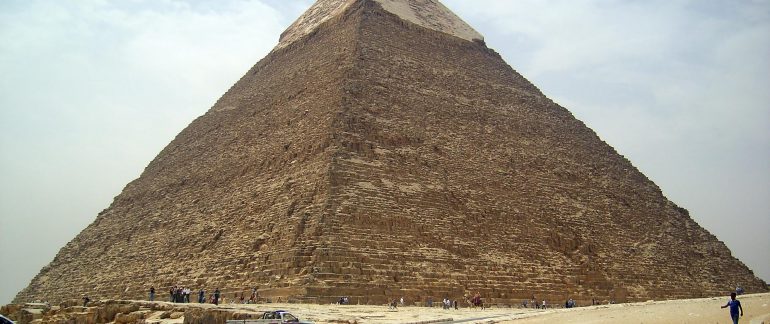
THE ROAD LESS TRAVELED: HISTORY
By Savannah Grace
Savannah Grace, Featured Writer
This week on #TRLT’s Twitter travel chat we’re deep diving into HISTORY.
Travel pries open the doors into the past. Born in North America, my definition on human history changed entirely when I hit the road. During my family’s yearly 6-week camping trips to the United States, I recall being amazed by natural historic sites such as the Mammoth Caves and their hundreds of miles of mapped and unmapped depths, The Great Sand Dunes National Park and mountain-sized dunes, Glacier National Park with its stellar glacier carved canyons, the sweltering heat in The Desert at Death Valley, and the colossal Grand Canyon with an age beyond 6 million years. Aside from the natural historical sites, when it comes to the span of human history in North America, a mere hundred years is considered an antique.
It was only after venturing beyond the borders of the North American continent that I realized that my 52-year-old, Canadian national flag is but a brief second, an infant, when compared to the deep-rooted human heritage that I’ve found in so many other parts of the globe. Now I call a quaint village in The Netherlands home. I’m delighted to inhabit a 117 year old farmhouse that once was a working cabbage farm with sloped floors, a lifestyle that is considered normal in most of Europe. That’s more than twice the age of my country’s beloved maple leaf flag and just 34 years younger than the oldest building in my hometown of Vancouver.
My initial overseas encounter with raw, ancient human history was on my 15th birthday. I stood thunderstruck in front of a 2,000-year-old army, 8,000 members strong, of Terracotta Warriors unearthed in Xi’an, China. Shortly after that I hiked 10km up and over the 2,000-year-old stones and intermittent stairways of The Great Wall of China. I marvelled at the 800-year-old steps of St. Olaf’s Church in Tallinn, Estonia, worn smooth from tens of millions of people who had traversed them. I absorbed the simplistic drawings on the stone artwork painted by man some 12,000 years ago at Gobustan in Azerbaijan. Walking hand in hand alongside Marco Polo, we journeyed overland on the Silk Road’s ancient trading routes moving from Western China to Uzbekistan. I visualized the merchants who traded in Samarkand, a city of azure blue mosaic tiles whose roots extended back 2,000 years. We continued onwards through Azerbaijan and Turkey and then crawled through the claustrophobic caverns of The Giza Pyramids; a whopping 4,500 years after they were constructed with the help of tens of thousands of slaves, devoid of any modern technology. Moments like this anchor me to the past, enriching me in ways I could never acquire in any other way, digitally or in a book.
At just 16 years old, history had taken on a whole new level of reality as I stood in front of the gas chambers of Auschwitz concentration camp. I thoughtfully read and watched authentic footage of German soldiers and prisoners. I was both captivated and disgusted at the same time by the terrors of such fresh and recent violent history. Moving through Auschwitz II–Birkenau camp in a numbed, horrified daze, I couldn’t help but think of my teenage friends back home, sitting in classrooms reading textbooks about World War II, open on their sterile classroom desks. They were skimming through pages in an effort to remember dates, general’s last names, battles and far off cities they will never travel to, for tests. There was no way to give them the same real experience or gut-wrenching impression of World War II that I had seen looking into large rooms dedicated exclusively to displaying the clothing, suitcases, shoes, eye glasses, artificial limbs and shaven hair that was confiscated and collected from prisoners upon arrival. Before They were brutally enslaved or marched to their death and gassed they were stripped of everything.
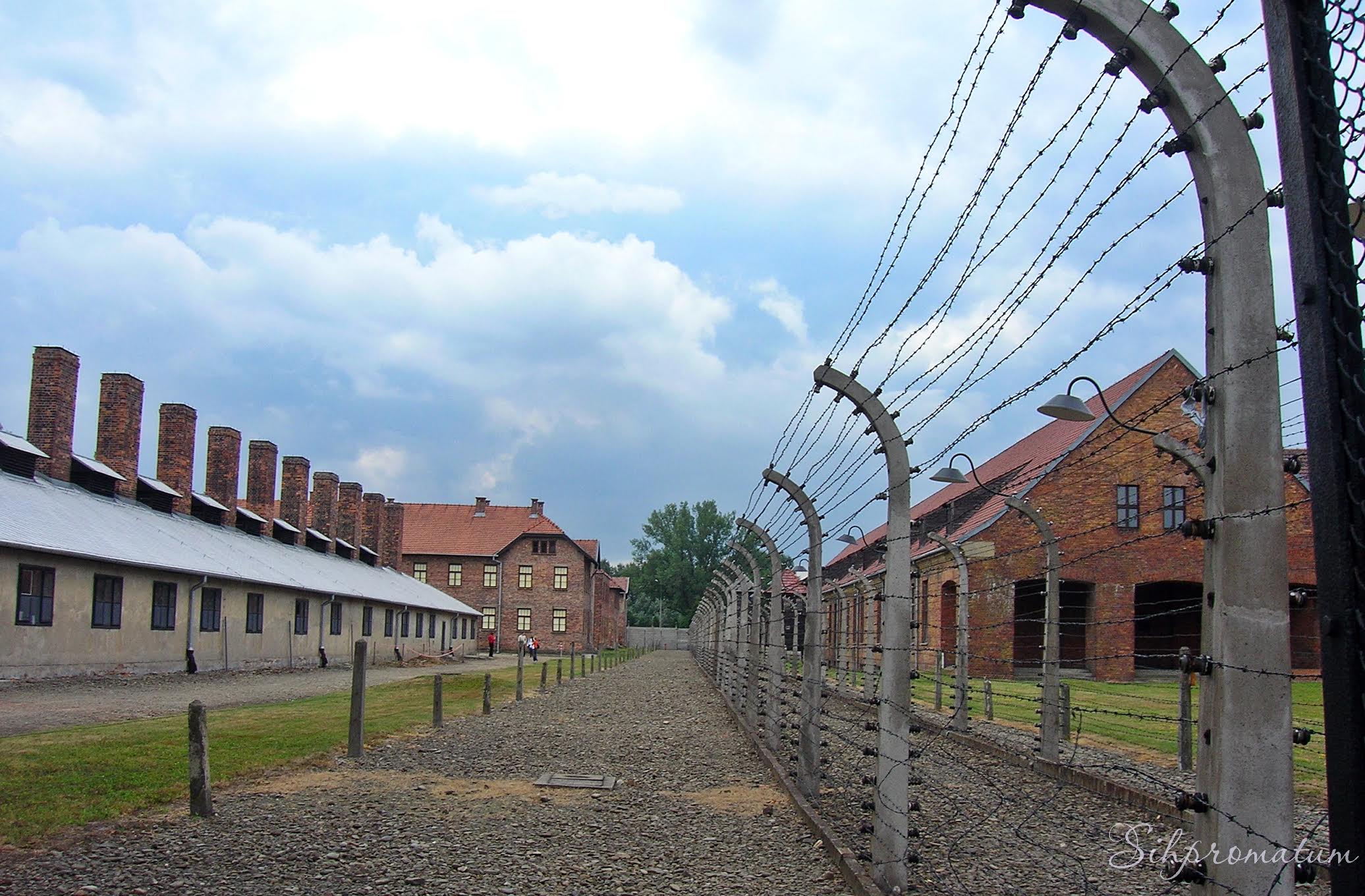
The unforgiving electric fences at Auschwitz concentration camps in Poland.
My eyes uncontrollably blurred with tears by the horror of the reality of their suitcases, each one thoughtfully packed by its owner with their most prized possessions, their names/addresses inscribed by hand were displayed on the outside of each case as if it would go home again.
I was on site, in Auschwitz, breathing the same air they breathed, standing on the same patch of earth they stood on, gazing into the gas chambers where three million humans, not only Jews, but POWs, brilliant intellectuals, political prisoners, homosexuals and gypsies, met their common end.
Prominent signage on the main entrance to the Auschwitz camp translates to, “Work will make you free”, a misleading and unforgivable lie that gave millions of victims false hope. Looking up into a light blue sky streaked with cumulus clouds, I imagined the heavens above were the prisoners’ only peaceful place separating them from the terrors of the concentration camps below. Heaven was the closest they would ever again come to freedom.
The heavy blanket of history weighed on me that day. The image of a mountain of broken and tangled eyeglasses, each one belonging to someone’s father, mother or child, will haunt me for the rest of my life. It was a lasting, almost tangible reminder of how paramount it is to choose caring over hate and to support peace in the world through travel and education, thereby ensuring we do not stand idly by while similar heinous acts are repeated.
I left the North American continent as an ignorant, shallow child and after four years on the road immersed in history, I returned a global citizen.
Do you remember a time history was brought to life and impacted you in an unforgettable way, a time when you were changed by it? Come share your photos and stories on HISTORY and its impact on you with us TODAY at 1pmNYC/6pmUK on “The Road Less Travelled” Twitter LIVE chat. Search the hashtag #TRLT to find us and don’t forget to include the hashtag in your tweets to participate with your fellow travelers! Inspire and be inspired. I am here each and every week hosting the chat with fellow travelers Shane Dallas (public speaker, visited 100+ countries), Jessica Lipowski (accomplished author and “foodie”) and Anton Magnin (specialist in family travel).
To read more about my first travel experiences with ancient human history starting in China, check out my travel memoir, “I Grew My Boobs in China”.
Consider the risks you will face during your journey and select an insurance plan that meets your needs. It’s Triptime. Click here to price your trip.

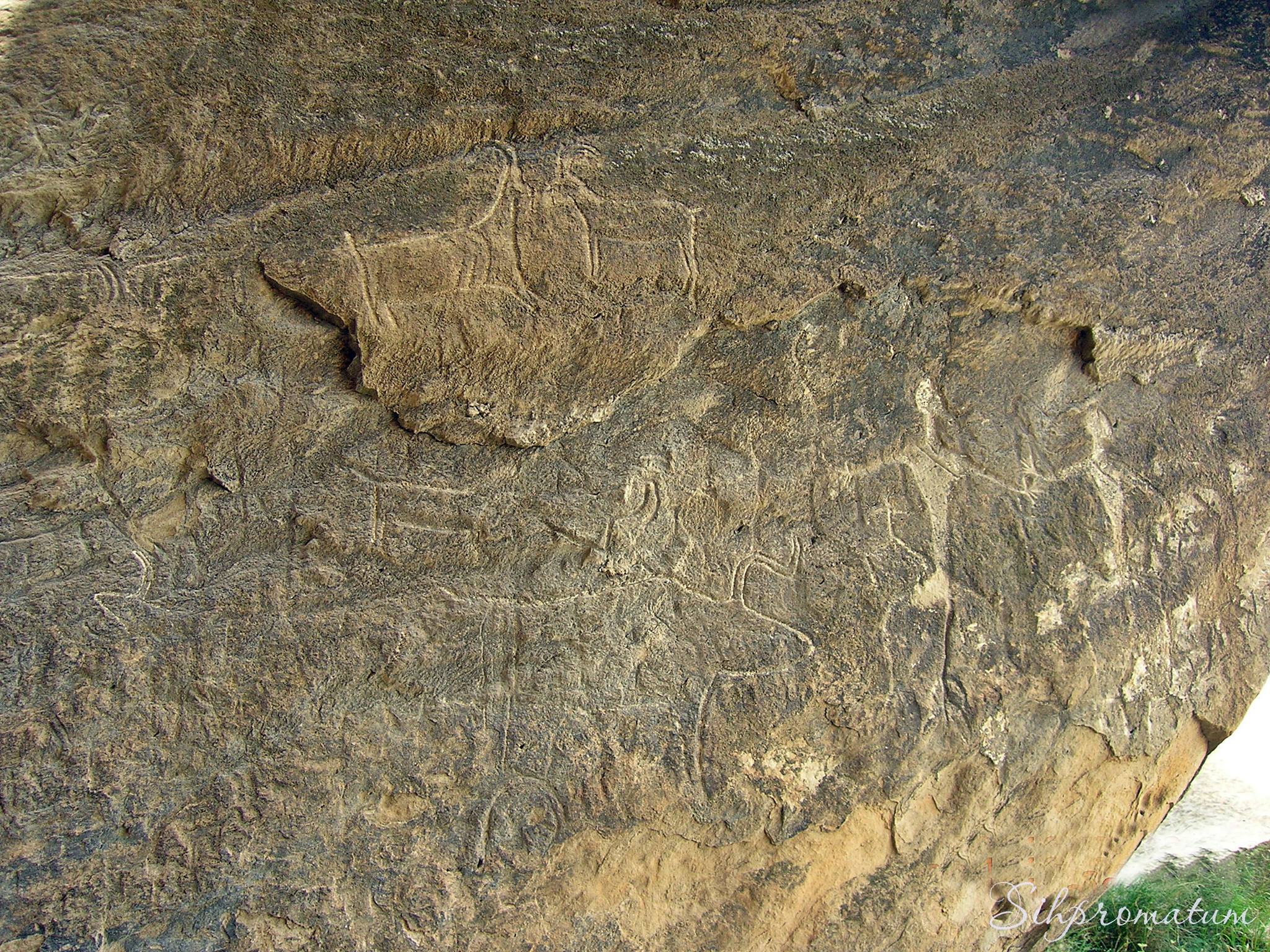
Petroglyphs in the National Park Gobustan dating back 12000 years
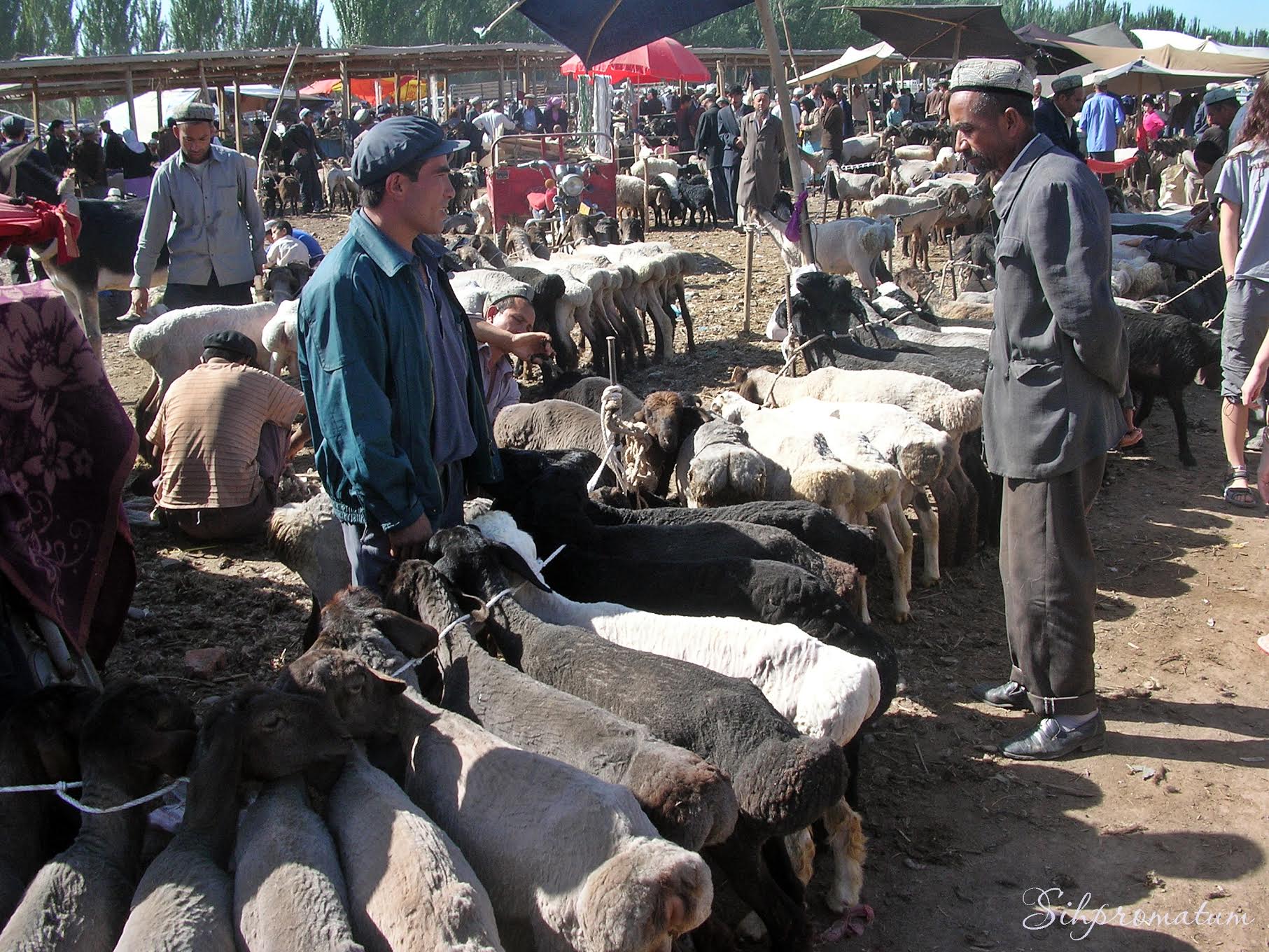
Merchants still continue to trade and bargain at historic animal market along the Silk Road in Kashgar, Western China.
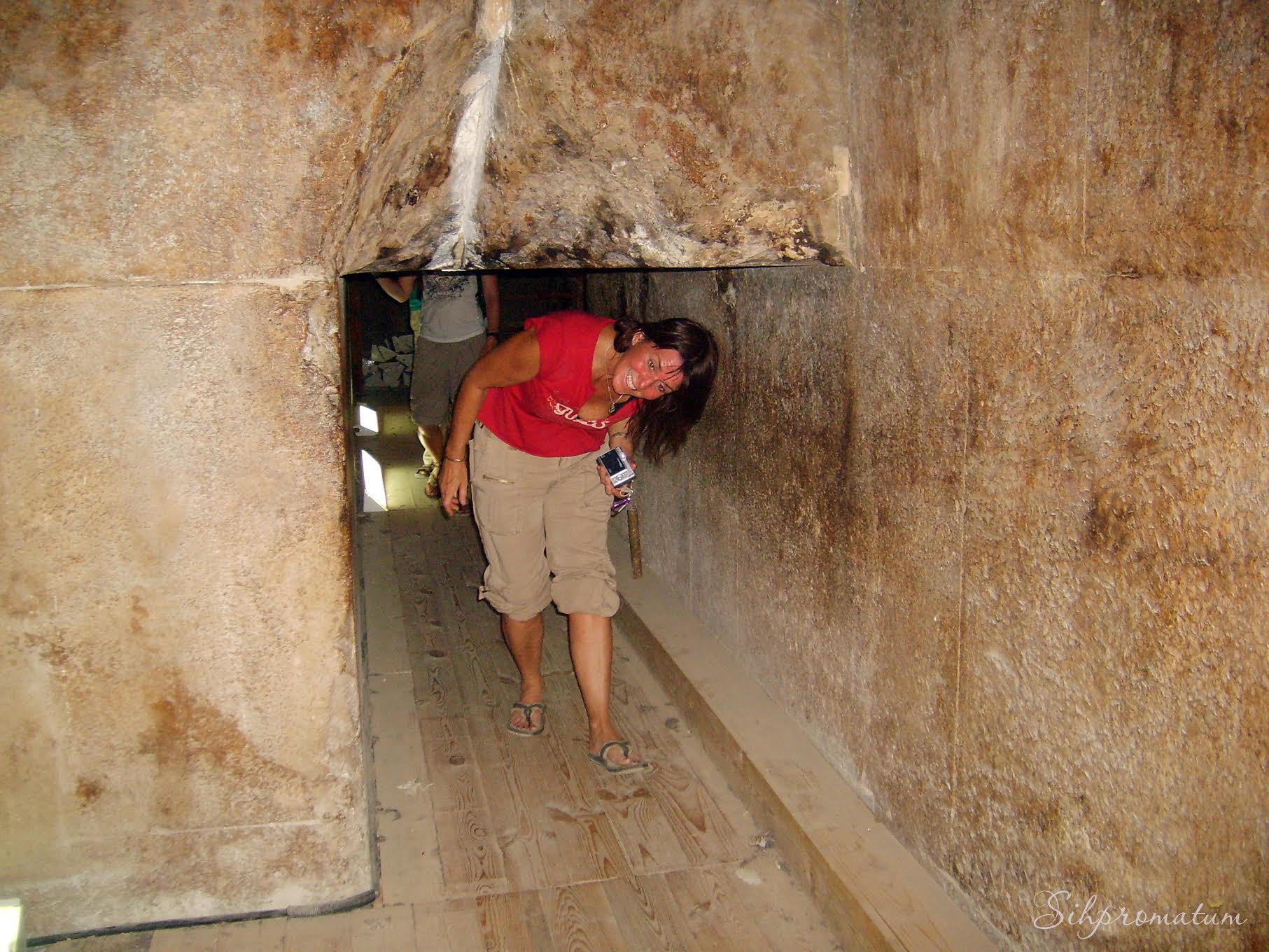
Making our way through the heart of Giza’s pyramids, Egypt.
n complete state of disbelief as I stand next to this grey wall and realize it is completely FILLED with thousands of names of people who lost their lives here. Auschwitz, Poland.

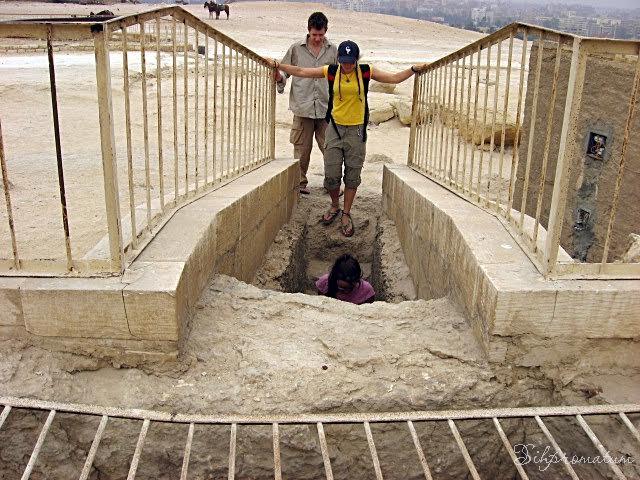
Heading down into the 4,500 year old belly of one of the most famous pieces of history in the world. Giza Pyramids, Egypt.
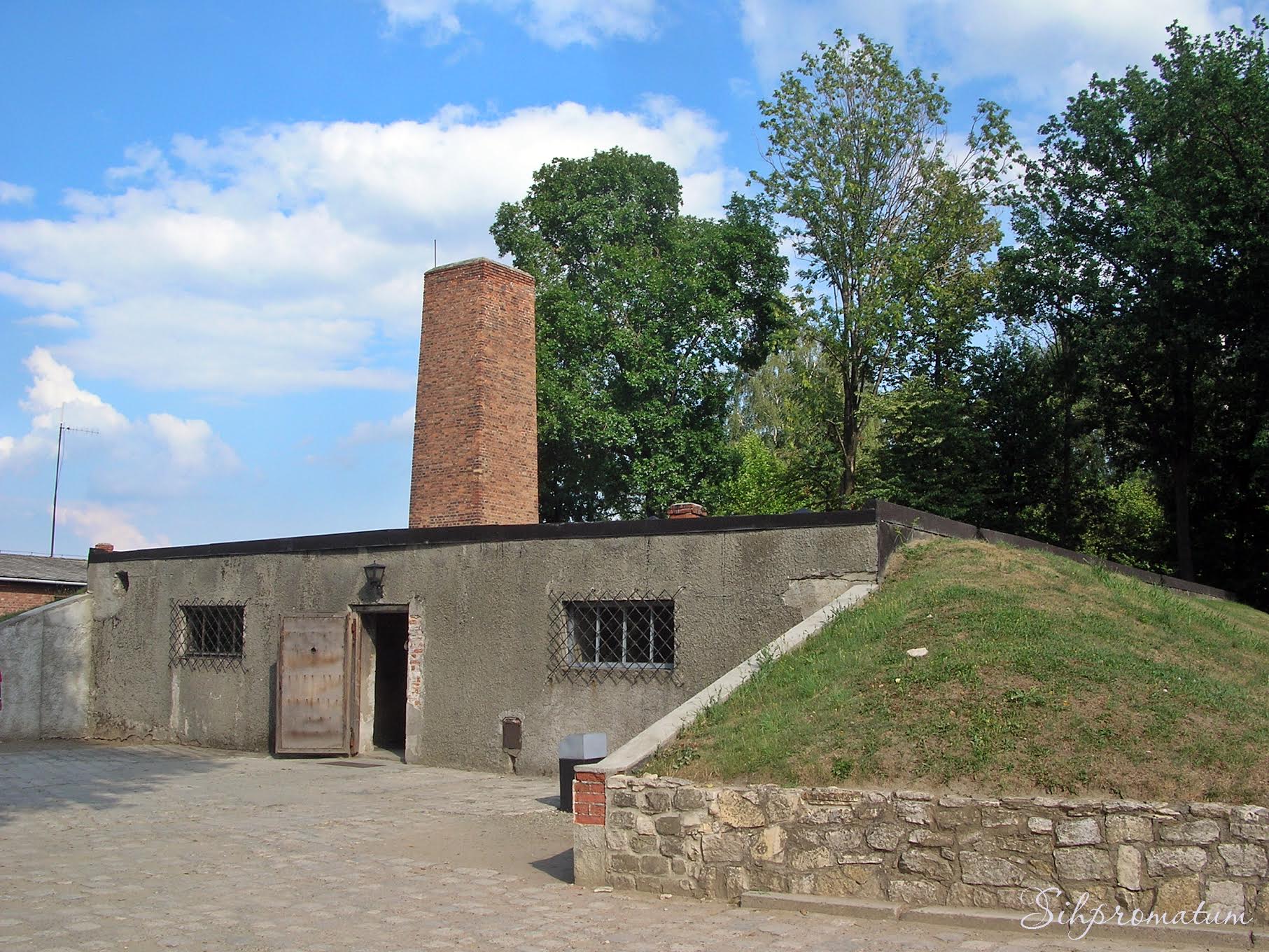
Crematorium at Auschwitz where thousands of bodies were burned each and every day.
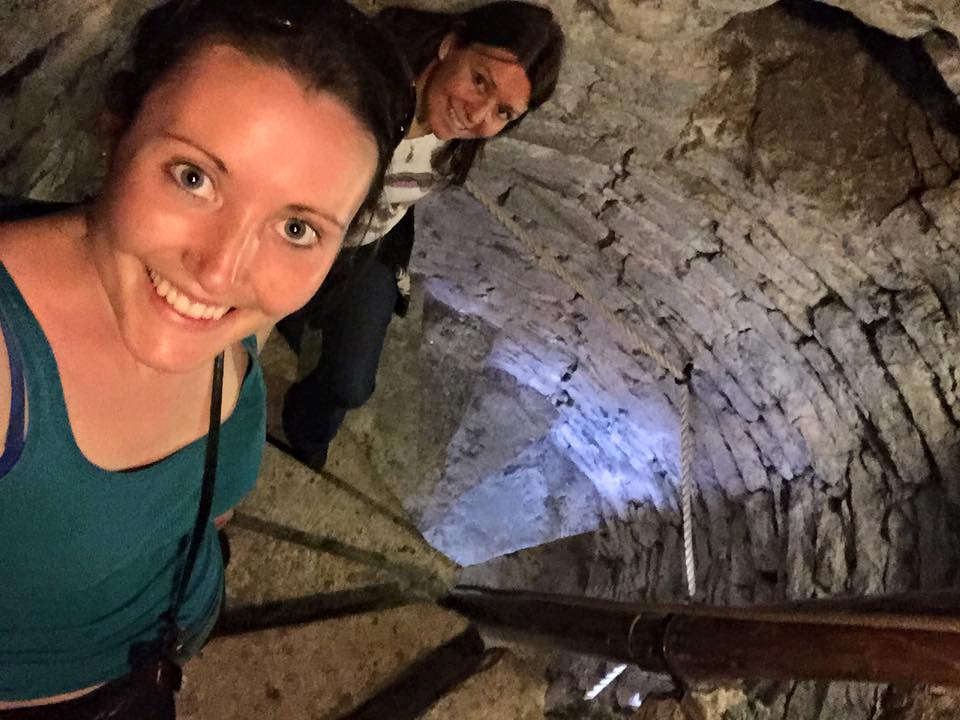
Climbing the 700 year old steps in Tallin, Estonia
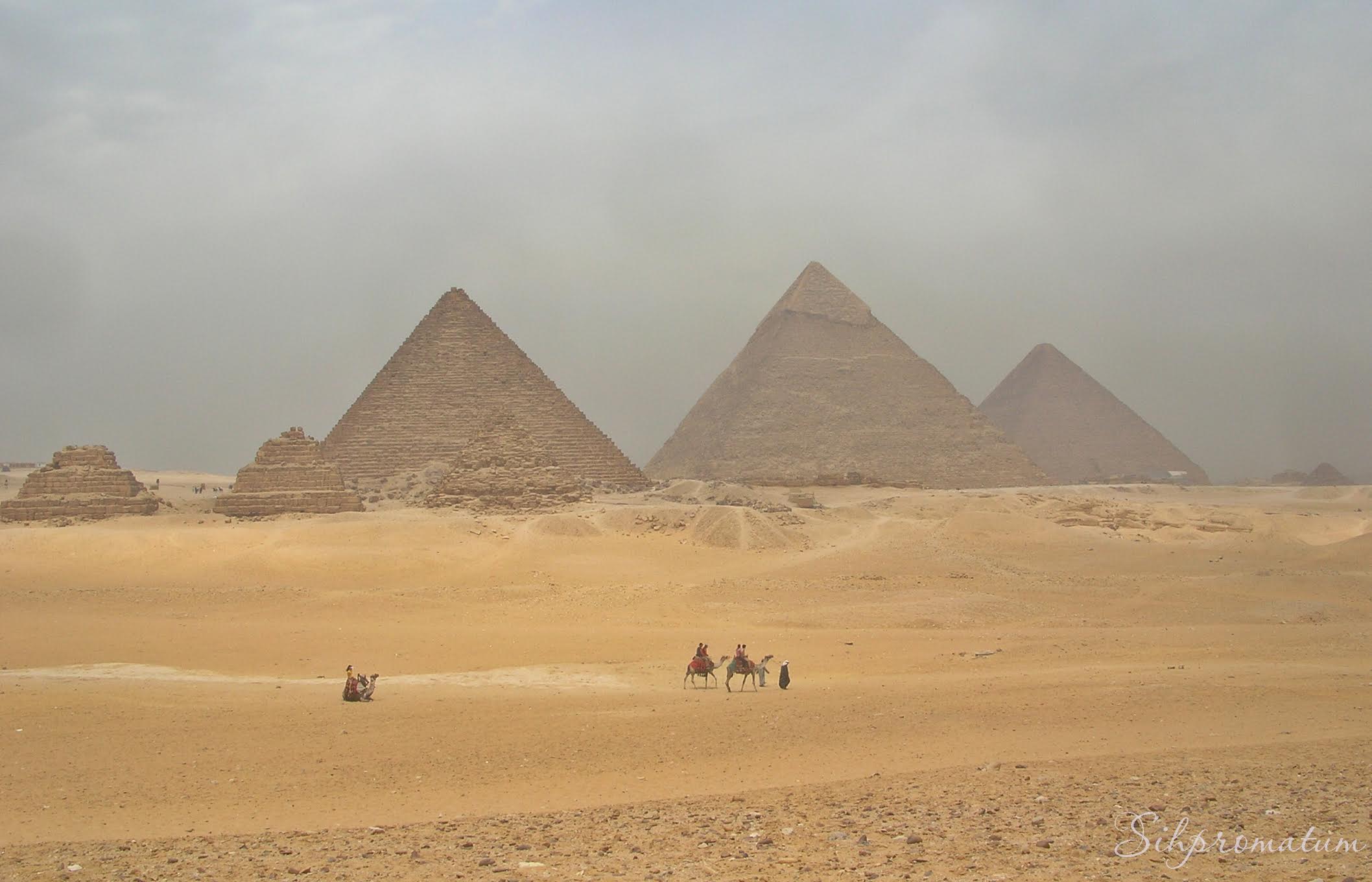
Ancient Giza Pyramids seen from camelback, Cairo, Egypt.

A keyhole into heaven seen from the complex of Auschwitz 2 Birkenau, Poland. Now all we need is to find the key.
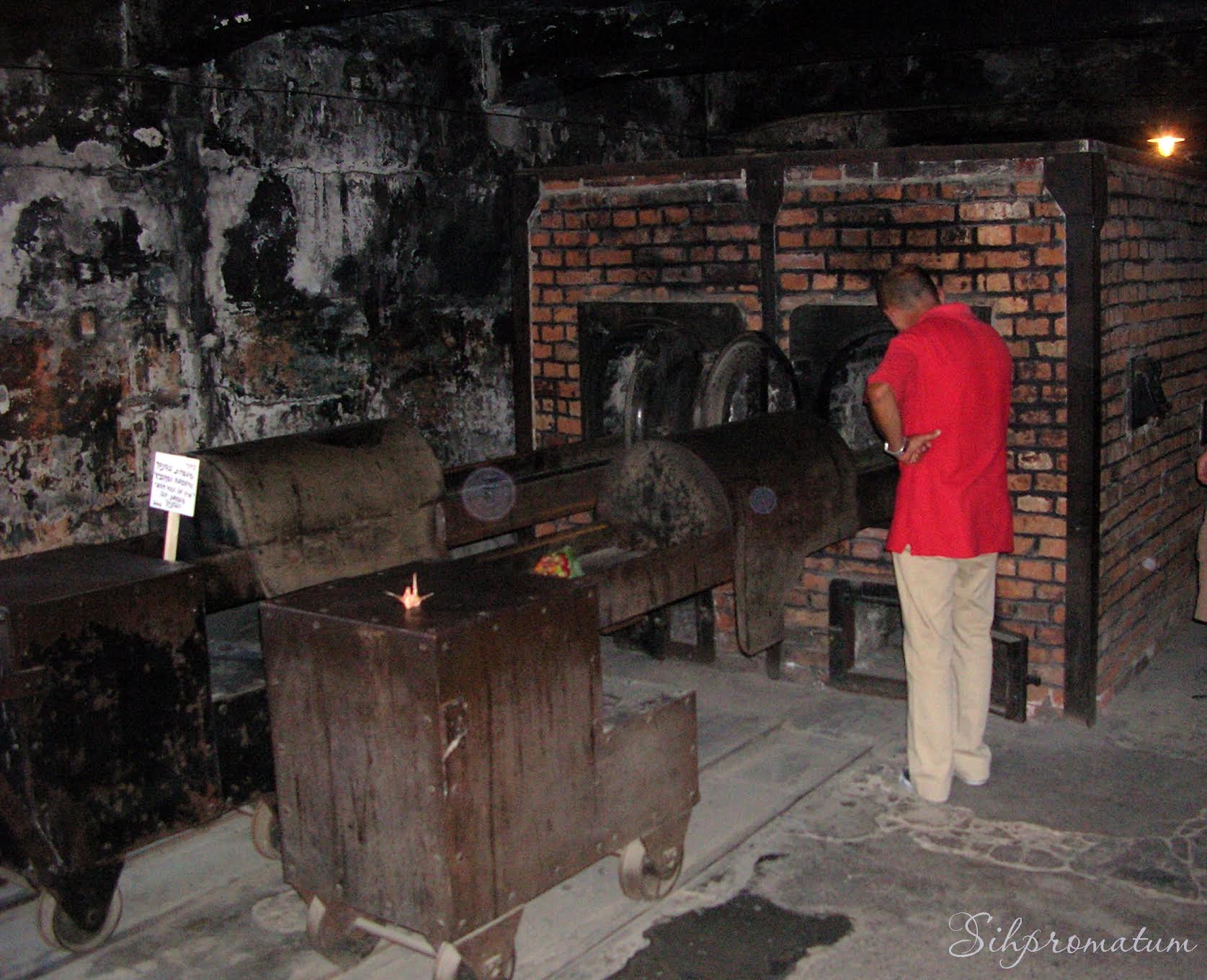
The sickening reality of history when you stare at it face-to-face. Crematorium at Auschwitz, Poland

Sitting inside and breathing ancient air within the belly of one of Giza’s Pyramids, Egypt.
You’ve made your airline reservations, you’ve selected your hotel, you’ve put your dog in the kennel, and you’ve forwarded your mail. Your international trip is just around the corner. Now it’s time to consider the risks you will face during your journey and select an insurance plan that meets your needs. It’s Triptime.


